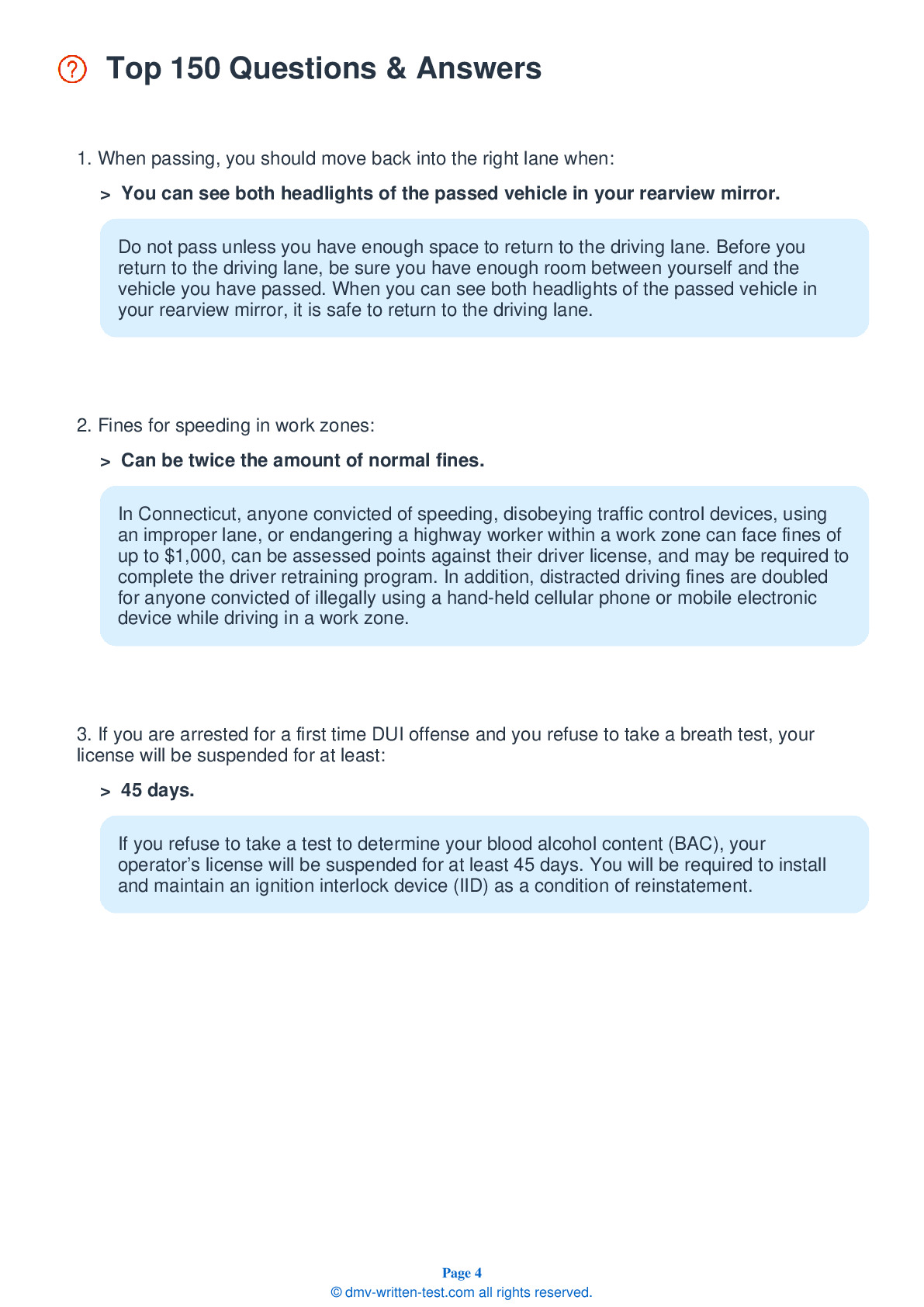2025 Connecticut Permit Test 6
The following questions are from real DMV written tests. These are some of the actual permit questions you will face in Connecticut. Each permit practice test question has three answer choices. Select one answer for each question and select "grade this section." You can find this button at the bottom of the drivers license quiz. For a complete list of questions and answers for Connecticut please visit https://cheat-sheets.dmv-written-test.com/en/connecticut/car.
Number of Tests
Number of Question
Passing Score
1. Always stop before crossing railroad tracks when:
Explanation
Expect a train on any track, at any time, traveling in either direction. If you need to stop after crossing the tracks, wait until you can completely cross the tracks before proceeding. Make sure your vehicle clears the tracks before you stop.
2. Driving more slowly than surrounding traffic is:
Explanation
Driving more slowly than other traffic can be dangerous. Drivers behind you may become impatient and will be tempted to take dangerous risks to pass you.
3. If you come to an intersection controlled by a flashing yellow light, you must:
Explanation
A flashing yellow traffic light means drivers must slow down, be more aware, and proceed with caution. Be alert to crossing traffic and pedestrians.
4. A flashing yellow light at an intersection means you should:

Explanation
When encountering a flashing yellow light at an intersection, you should slow down and proceed with caution. You do not need to come to a complete stop when approaching a flashing yellow light.
5. You should allow an extra cushion of space:
Explanation
Drivers of trucks, buses, vans, or any vehicles pulling campers or trailers may not be able to see you if you are driving directly behind them. Increase your following distance when driving behind one of these vehicles. Additionally, large vehicles can block your view of the road, so increase your following distance to look around the sides of the vehicle and see the road ahead.
6. You want to park downhill on a two-way road and there is no curb. Which way do you turn your front wheels?
Explanation
When parking facing downhill on a road with or without a curb, or when facing uphill on a road without a curb, turn your front wheels toward the edge of the road so your vehicle will roll away from traffic if the brakes fail. However, when parking uphill on a road with a curb, turn your wheels toward the center of the road so the vehicle will roll into the curb if the brakes fail.
7. A solid yellow line next to a broken yellow line means that vehicles:
Explanation
Yellow lines separate lanes of traffic moving in opposite directions. A broken yellow line next to your driving lane means that you may pass.
8. Hydroplaning occurs when tires ride on a thin film of water instead of on the road. To prevent hydroplaning in wet weather, you should:
Explanation




